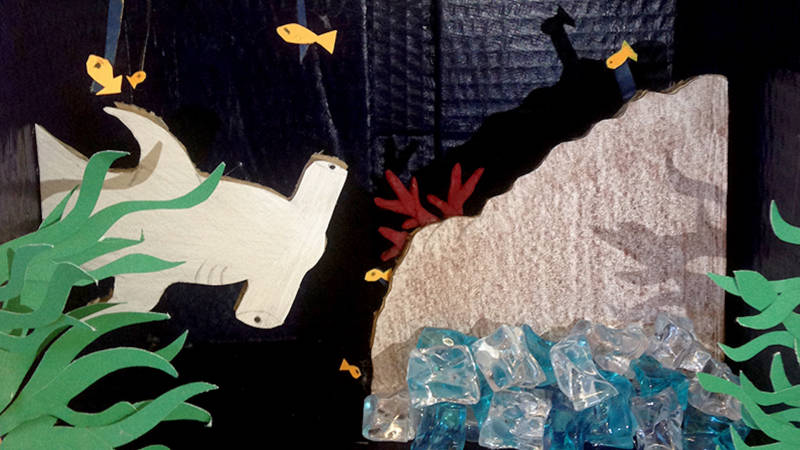I am seeking to expand my Art 1 students’ capacities to collaborate and problem-solve as teams. In addition, I am determined to more deeply implement the practice of Art Integration, as a way of “Teaching in which students construct and demonstrate understanding through an artform (while) students engage in a creative process which connects an art form and another subject area.” (Kennedy Center’s Art Edge). My projects involve a great deal of student choice, student voice (Gallery Walks as forms of Peer Feedback), and mutual respect (collaborative teaming). Students also look to science, history and their own cultural experiences for inspiration.
Box Art About Systems
In the project: Box Art About Systems, students work in teams to create a diorama or tableaux in a box that represents a system with which they are familiar. They look at the work of artists like Joseph Cornell and Betye Saar and learned about the scientific definition of a system : “an organized group of related objects or components that form a whole. Systems can consist … of organisms, machines, fundamental particles, galaxies, ideas, and numbers. Systems have boundaries, components, resources, flow, and feedback” (National Academy of Sciences)
Their System Boxes were to emphasize Harmony/Unity as well as Movement/Visual Flow. Their Understanding Goals include:
- How can I represent and model a system so that it’s both understood and artistically compelling?
- What are the elements of my system and how can I use found object assemblage to describe it?
- How does teamwork affect the outcome of an artistic project?
Based on this mutual understanding, the whole class brainstorms examples of familiar systems. Teams of 2-4 people are formed that have to come to an agreement on a system to investigate and represent in their own box art. The piece was to include features of that system (boundaries between what’s inside and outside, component parts, how things work together, etc.).
Once finished, they give their boxes titles and participate in a Gallery Walk in which they comment on each others’ projects, citing specific Principles of Design from a Menu of Compositional Qualities – which students were expected to incorporate in their groups’ System Boxes.

